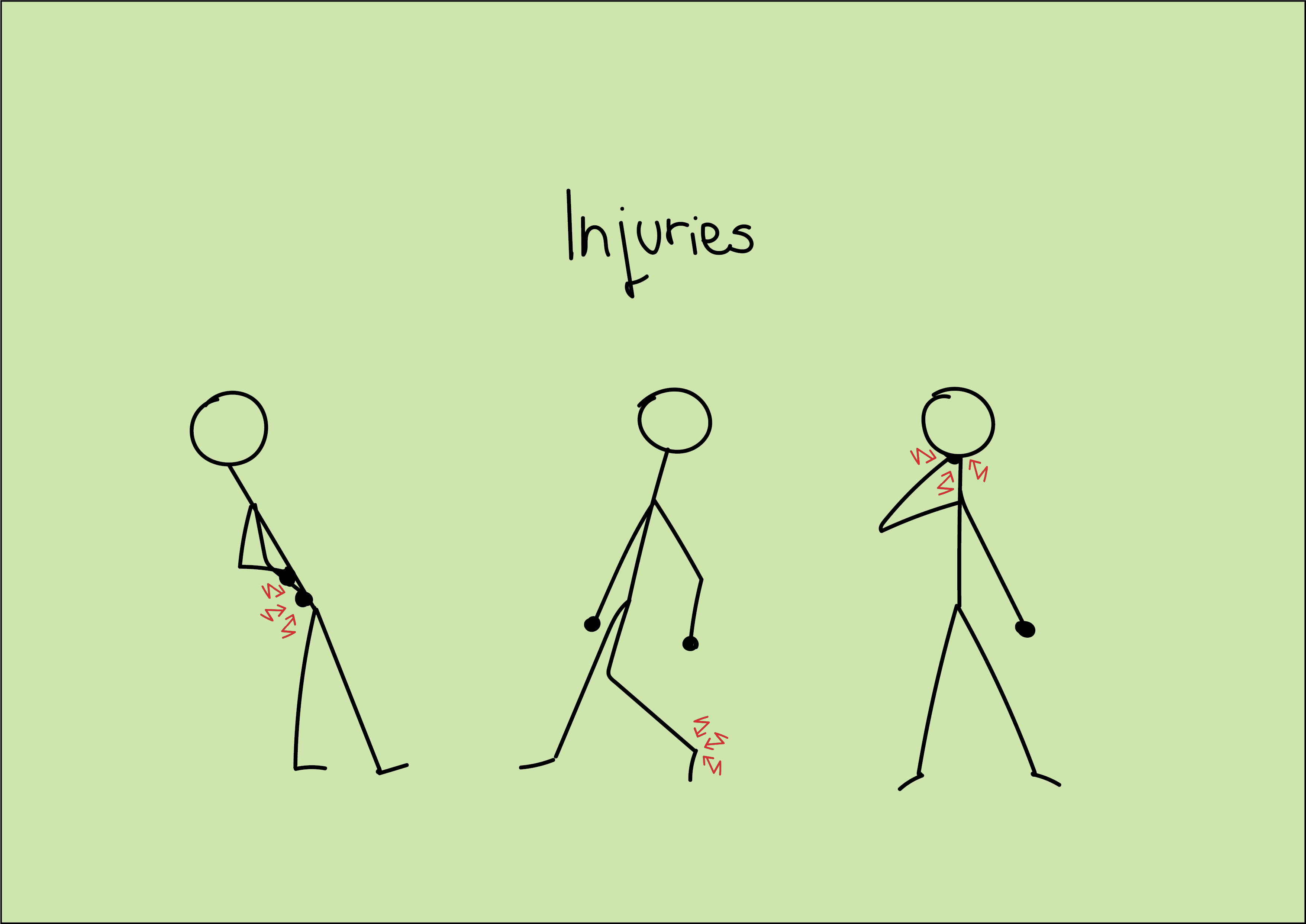
Injuries
Injuries are happening. There are different reasons for them to happen, e.g. problematic flooring/ wrong equipment/ no proper warm up/ constant strain on a certain area/ fatigue/ overtraining etc. There is barely someone who doesn´t experience an injury at a certain point in his*her dance career. It is important to take the signs, your body gives you, serious. The earlier you listen to what your body needs, the higher the chances of a quick recovery without the necessity of longer practice breaks or so. A classic example is the rupture of the Achilles tendon – it doesn´t rupture all of a sudden, there is always a history of minor injuries/inflammations etc. coming before. So if you are constantly tired, if your muscles don´t stop feeling sore, or – on a more alarming level – if you have a swelling or feel pain: Try to find out where it comes from, maybe rest for a few days and, depending on your symptoms, go to see or get advice from a professional (e.g. the guys from ”HE4DS- Health Education for Dancers” also offer counsel-calls – I inserted their website link below).
Before it comes to all of that, you can analyze the body parts that experience the most strain in your body. Each dance style certainly has typical body parts that are very strained: e.g. the shoulders of Bboys* and Bgirls*, the knees of Poppers, the ankles of House dancers etc. And accordingly, you can prepare your body through strength and flexibility training etc. Additionally make sure you perform difficult movements correctly and in a healthy way. For the last aspect it is always good to team up with other dancers to get feedback from an outside eye. You can also use video recordings e.g. to check your execution of certain moves. And don´t hesitate to open up conversations with others about how they practice certain things, how they avoid overstressing certain body parts, what they are doing for rehabilitation etc. Use the “each one teach one” mentality of hip hop culture!
Some knowledge I want to share with you, to help you rank your symptoms are the signs of inflammation: reddening, heat, swelling, pain and loss of function. These symptoms don´t always appear all together. If you feel like you might have an inflammation, release the inflamed body part, you can cool it, you could take anti-inflammatory-medicine, but you also might not be able to handle your injury alone. Don´t ignore your body! Get help. It´s your instrument. If you suffer from pain more than 6 month, there is a thing called “pain memory” come into effect. This is when fighting the source of the pain alone isn´t enough anymore, because your brain memorized it. Even when the root of the pain is gone, you might still feel the pain. What this means is, you have to unlearn the pain, which takes time and often needs support. Try to avoid this! Take action before.
To give you an insight into the different time frames injuries need to heal, here are the major groups of severer injuries you can distinguish:
1. Bone injury/ fracture: Depending on whether you got operated or not and if so, how they operated, you can expect a time frame of 6-12 weeks of release.
2. Tendon/ligament ruptures need roughly 6 weeks of release.
3. Muscle injuries: If you have a ruptured fibre, you need to rest circa 2 weeks. If you ruptured more than a fibre, e.g. a bundle, you need to count in more time.
4. Joint injury: If you e.g. dislocated a joint a depends on what other structures are affected (ligaments, cartilage …). A ruptured capsule needs round about 6 weeks of release.
5. Cartilage injury: Cartilage doesn´t heal from itself. There are several options for conservative or operative treatment to stabilize the joint/ release you from pain as much as possible.
And don’t get me wrong: After this time of release, the rehabilitation work starts. Even after a minor rupture of a muscle fibre you can not directly go back to your full training load and rather have to build it up step by step again.
Crossed fingers that it never comes to that! …Questions?

